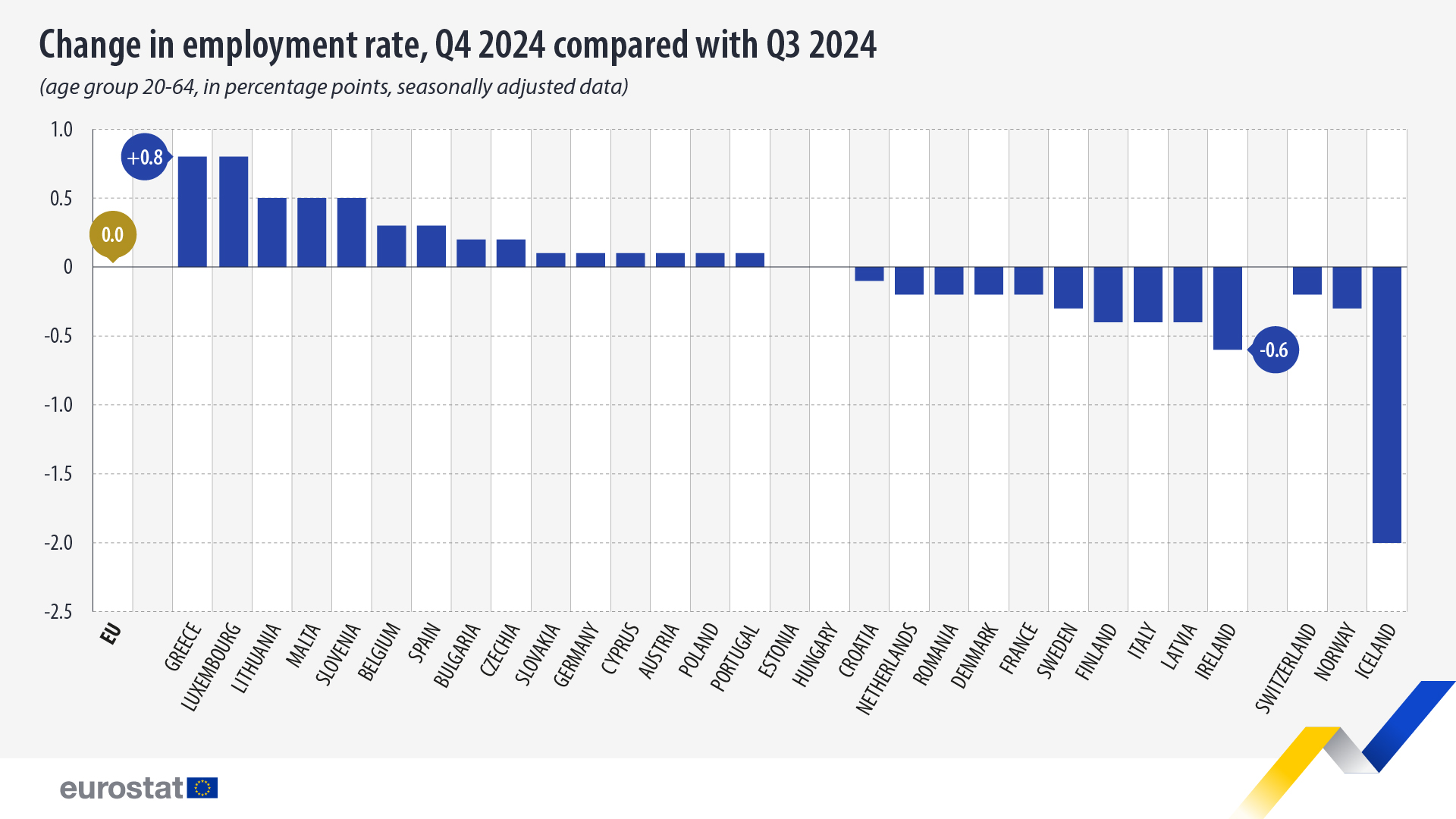Employment rate stable, labour market slack down in Q4 2024

In the fourth quarter of 2024, the employment rate of people aged 20-64 in the EU stood at 75.9%, stable compared with the third quarter of 2024.
Labour market slack - all persons who have an unmet need for employment, including unemployed people - amounted to 10.8% of the extended labour force aged 20-64 in the fourth quarter of 2024 (a decrease of 0.1 percentage points (pp) compared with the third quarter of 2024).
This information comes from data on the labour market in the fourth quarter of 2024 published today by Eurostat. This article presents only a handful of findings from the more detailed Statistics Explained article on EU labour market.
Source datasets: lfsi_emp_q and lfsi_sla_q
Between the third and the fourth quarter of 2024, Greece and Luxembourg (each +0.8 pp) as well as Lithuania, Malta and Slovenia (each +0.5 pp) registered the highest increases in the employment rate among the 15 EU countries where employment rose. The employment rate remained stable in Estonia and Hungary and decreased in 10 EU countries, with the biggest decreases recorded in Ireland (-0.6 pp), Finland, Italy and Latvia (each -0.4 pp).
Source dataset: lfsi_emp_q
For more information
- Statistics Explained article on EU labour market - quarterly statistics
- Statistics Explained article on EU labour force survey
- Statistics Explained article on EU labour force survey - correction for breaks in time series
- Thematic section on employment and unemployment (LFS)
- Database on employment and unemployment (LFS)
- Statistics4beginners on the labour market
Methodological notes
- The extended labour force is the total number of people employed, unemployed, and those seeking work but not immediately available, plus those available to work but not seeking. In this article, data cover population aged 20 to 64.
- This article uses quarterly and seasonally adjusted data from the EU labour force survey (EU-LFS) data.
If you have any queries, please visit our contact us page.


